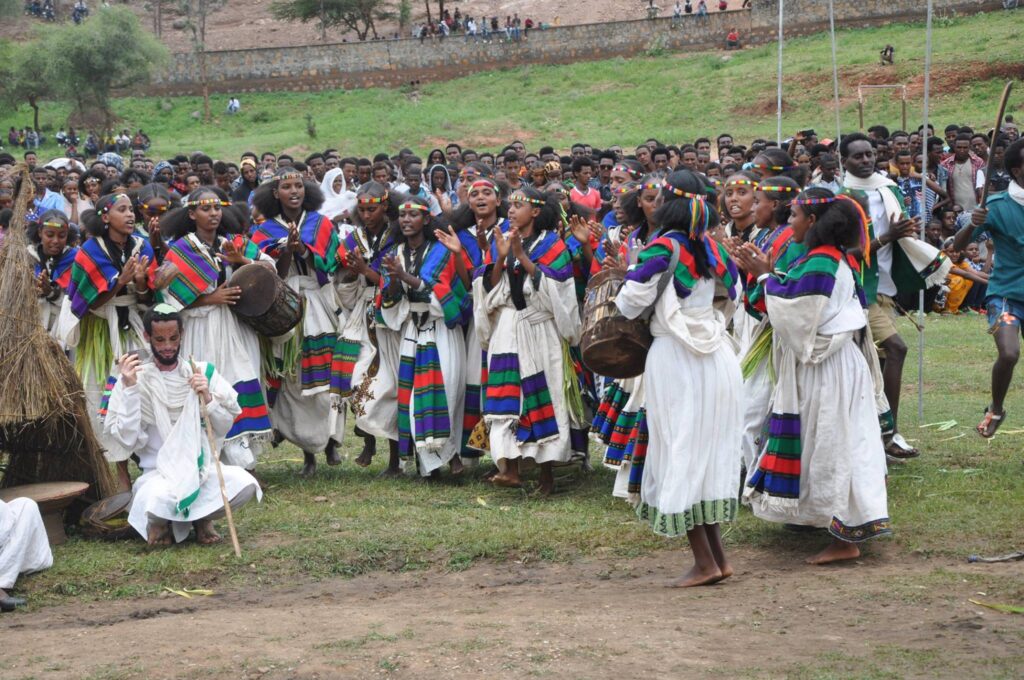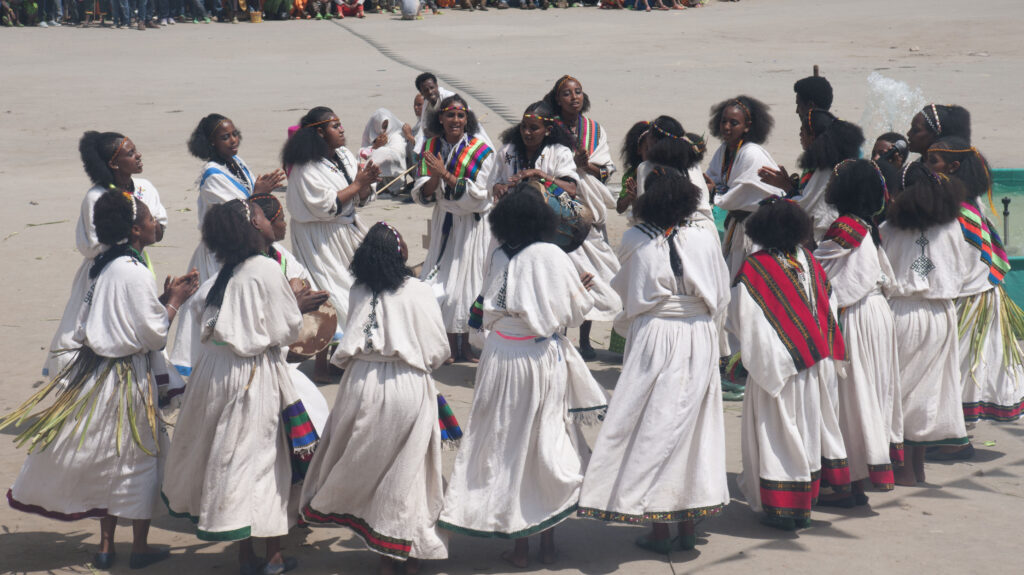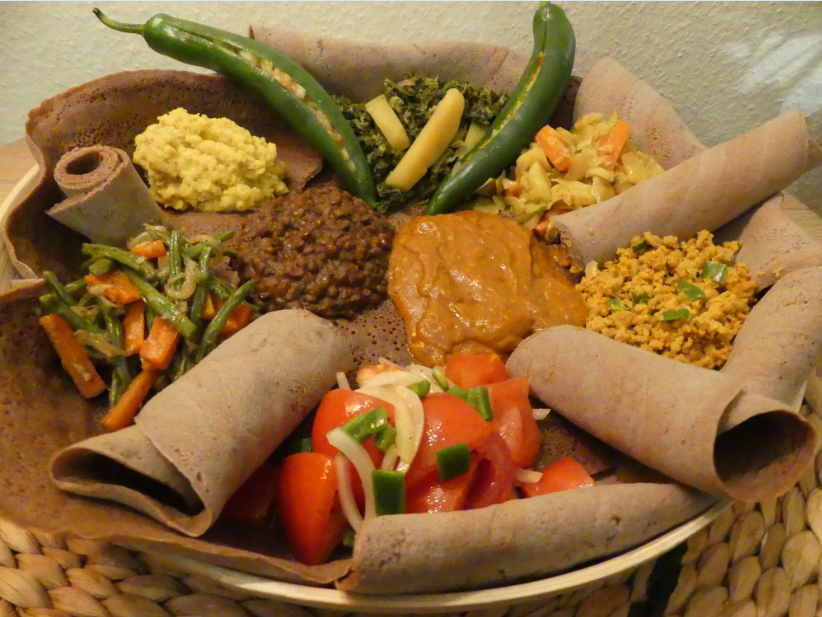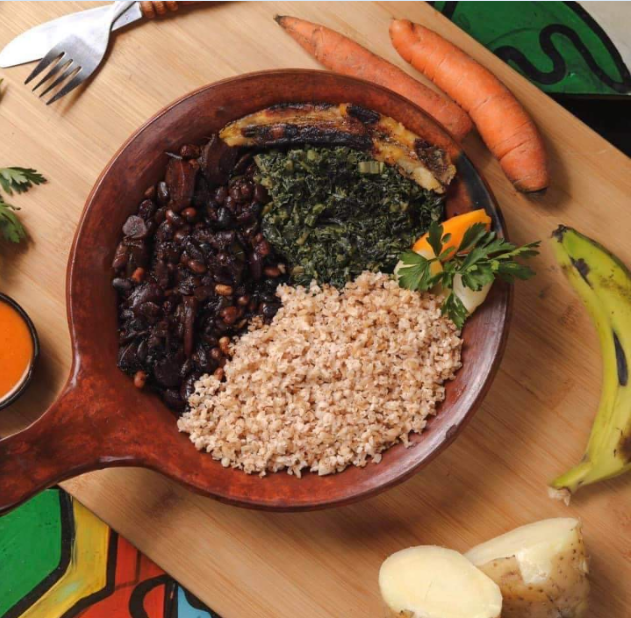It is believed this cultural celebration is founded upon the solemnity of the Assumption of Saint Mary, that the Ethiopian Orthodox Tewahedo Church and devotees across the country celebrates every year on Nehase 16 (August 22 GC). The northern part of the country, particularly the Tigray and Amhara regions has a longtime unique tradition in commemorating this occasion. Colorful practices and details related with this festivity can vary depending on where you travel in the region but its pronounced quintessence is not hard to miss and worth capturing.
It is a fascinating cultural celebration formed by a compilation of enchantingly intertwined features – religion, region, women, culture, ritual, freedom of self- expression and season.
Filseta is the Ge’eze name locally used to refer the fast and feast of the Assumption of Saint Mary. Filseta preceded by 15 days of fast known as Tsome Filseta. It is one of the seven fasting periods sanctified by the Ethiopian Orthodox Tewahedo Church.
According to the church, it is to remember the fast held by the Apostles to witness the Dormition, Resurrection and Assumption of Saint Mary to heavenly glory. The fast carried out in holy diligent demeanor. Exceptionally, young children above age seven also participate and receive Holy Communion during weekdays until they break the fast. The elderly engage on spiritual retreat to churches across the country and Divine Liturgy takes place every day for 15 days.
Northern Ethiopia is known for many UNESCO inscribed world heritage sites of ancient rock-hewn churches, obelisks, royal castles and for its natural wonders– the source of Blue Nile (Lake Tana), the Blue Nile Falls and the Semien Mountains.
Its renowned festivities also have sacred duality– Lalibela and the soul nourishing Genna (Ethiopian Christmas), Gondar and the mesmerizing colorful Timket (Ethiopian Epiphany), Aksum and the humbling Hidar Tsion (St. Mary of Zion) Annual religious festival.
This region’s unique cultural celebration of the Assumption of SaintMary, is now relishing a revival – from past obscurity to stardom. It is known by its various local names – Ashenda in Tigray, Ashendiye in Lasta Lalibela, Shadey in Wag Hemra and Soqota; and Solel in Semien Wolo and Kobo, to name a few.
Women play a significant role in every aspect to glorify this celebration. The cultural ceremonial songs are performed mostly by young girls who energize the surrounding by their presence. Adults, mothers and elderly add values by enhancing feminine energy – handing over tradition, cooking, entertaining guests, and infusing warm ambiance which is powerful enough to travel beyond homes.
Culture is herald beautifully via women’s traditional costumes – from the white handwoven to the floral flowy long dresses. Traditional Jewelries – from the three staged crosses to the long colorful neckless.

Characterized traditional braided hairdos – from versatile geometrical cornrows to mix plaits of thin and chunky cornrows, with loose gracious mane of goddess braids. Plant based green add-on swirly garment, to be wrapped around the waist and placed at the backof the dress for the purpose of heightening unique traditional rhythmic danceis one of its prominent cultural signatures.
Ritual is honored with traditional sequenced practices and the preparation is much anticipated by young girls. Few days before the big day, they get together to form a group, create new lyrics and melodies, rehearse, pick a lead singer and traditional drum player for the group, collect a particular grass-like long leaves and make unique ephemeral green garment fortheir traditional performance.
Freedom of self-expression is one of the most awaited and highly valued aspects of this celebration especially for women. Being on the spotlight radiating goddess energy, using the event as a blank canvas and paint it with self-expression derived from the strong and vibrant feminine energy with in – creativity, freedom, exhilaration, passion and alignment.
Season is one of the components delightfully influence the festivity as it falls towards the end of the rainy season. The expectancy of a new season with new beginning makes it a joyful transitional occasion.
Step into the Holiday spirit
Few days before the feast, villages and cities start signaling the upcoming event. Stores filled with colorful traditional costumes and jewelries. Local markets bustle with goods and people.
The actual celebration day is first announced and honored early in the morning in solemn glory within all the Ethiopian Orthodox Tewahedo Churches across the country in the presence of whitely dressed vibrant devotees. After the formal ceremony and receives blessing, young girls starts to revere the impeccable mother of God, Virgin Mary, by singing their heart out, clapping and beating a drum.
As tradition carved it, throughout the day they go around the houses and sing songs which express their best wishes for the residents of the homes and in return they are given gifts. Generally, it is a three to five days affair depending on the area, with the biggest day being the first day.Unlike any other holidays, streets are not eerily calm and stores or restaurants are open for business which makes it even livelier. The festivity provides exceptional cultural immersion experience for visitors. It is to be part of one of the holiest and solemn days in the Ethiopian calendar. At the same time, to witness unforgettable divine feminine energy being expressed through indigenous costumes, songs and dances. It is also to embrace all the sacred intangible distinctive quality of a place and a deeper insight into Ethiopia.
By Sara Genene





